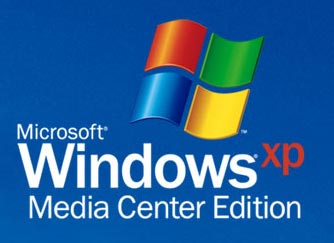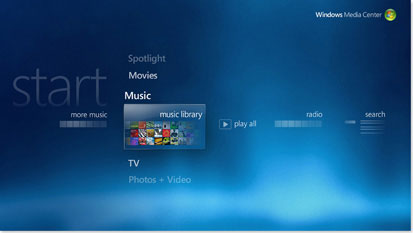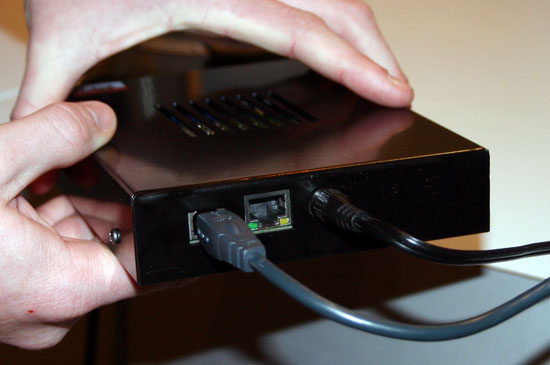
Original Link: https://www.anandtech.com/show/1914
ATI's OCUR Brings CableCard and HDTV Support to Windows Vista
by Anand Lal Shimpi on January 5, 2006 6:00 AM EST- Posted in
- Trade Shows
When Microsoft first launched Windows XP Media Center Edition around two years ago it was honestly a very impressive first attempt by Microsoft. By the time MCE 2005 rolled around, you honestly couldn't get a better looking, more responsive and well rounded PVR interface from anyone else. Harnessing the power of today's extremely fast CPUs, Media Center Edition could not be beat - except in one key area: HDTV support.

When Microsoft updated MCE at the end of 2004 they finally added HDTV support, with one caveat: it only supported OTA (Over The Air) HDTV signals - in other words, only HDTV channels you could get over an antenna. There was no support for premium HD channels such as HBO HD, which meant that MCE's HDTV support was basically useless.
The lack of any real HDTV support kept Media Center Edition from being a viable option for many. Sure it looked good and was very fast, but for around $10/month you could lease a HD-DVR from your cable company and get more functionality than from your fancy $2000 PC.
Microsoft had originally promised to fix the HDTV support issues in the latest update to MCE, but concerns over DRM protection on HD content was raised and Microsoft's hands were forced into delaying the support until Windows Vista.

If you've been following Vista at all you will know that there will no longer be a standalone MCE OS, rather the support will be bundled into a couple of versions of the OS. Windows Vista Home Premium and Ultimate Editions will both feature media center functionality, and both of those will finally have support for recording of live premium HD content. The HD support itself shouldn't be news to you, but the hardware that enables the support is what we're here to talk about today and the only company that's currently demonstrating it is ATI.
Introducing ATI's OCUR
Although their GPU teams have gone through their ups and downs, the one group at ATI that has consistently done well is their multimedia team. While they have always been quite competitive in the PC multimedia space, nothing is even remotely close to what they are showing off at this year's CES.
At the show ATI is demonstrating the world's first and only CableCard HDTV tuner for PCs, and we were fortunate enough to get a hands-on demo of it.
Currently called ATI's OCUR (Open Cable Uni-directional Receiver), the CableCard tuner is presently only a technology demo, with the final product shipping alongside Windows Vista sometime in 2006 (Microsoft is officially saying "Holiday Season 2006"). Despite the early nature of the product, the reference design is done and simply waiting for Microsoft to ship their OS.
The first versions of the OCUR will be provided exclusively to OEMs and not for retail sale, but ATI will eventually release a product directly to consumers. ATI is currently the only manufacturer to have a ready and certified reference design, and they do say that it is possible that they will be the only one at launch.

Windows Vista with CableCard support - running on a laptop
Currently there are two versions of the OCUR design, one external and one internal, but both offer the same functionality. The external box is obviously no where near polished, but the internals of the design are complete.

The way it works is simple: you connect a coaxial cable to the front of the OCUR, plug in your CableCard and run a USB cable from the back of the unit to your Windows Vista PC. To your PC, it appears to be nothing more than a regular tuner, except that it can now tune all channels - analog channels as well as premium HD content. Note that the tuner only supports CableCard 1.0, but with Vista you'll have your own EPG (Electronic Programming Guide) so you really only lose out on on-demand and pay-per-view functionality. The pros definitely outweigh the cons though, as you'll be able to finally have a PC based HD-DVR.

The internal version of ATI's OCUR
It's worth noting that both the internal and external versions use USB 2.0 to interface to your PC. The internal version will either have an external USB port you can connect (externally) to your PC, or it will have an internal connection that you can run to your motherboard's 4-pin USB header. The output of the tuner is at maximum a 19.2Mbps signal, so USB 2.0 is more than enough to carry it.

You'll also notice an Ethernet port at the back of the box we were shown, however that won't be in the final design. ATI will eventually bring a design to market that will work over Ethernet and not just USB. An Ethernet design could potentially mean that the tuner wouldn't be tied to a single PC but accessible by any PC on the same network (obviously only one machine could access it at a time).
Inside the tuner are two pieces of ATI silicon - a Theater 550 and a NXT 2003, the combination of which handle all of the tuning and demodulation on the device. There is a FPGA in the device that along with some other custom silicon handles all decryption from the original broadcasted signal as well as encryption before handing the content off to the USB controller for transmission to the PC.
OCUR in Action
The tuner is completely controlled by Windows Vista's media center interface, you don't have to treat it any differently once you've got it setup. Although protected by Vista's DRM, once on your machine you should be able to share the content throughout your network, however it has yet to be seen exactly how that's going to work. We would assume that you should at least be able to stream the content to any Xbox 360s on your network.
The demonstration was run on a special build of Vista with support for the external tuner:

As you can see, we had no problem watching HD content and the device worked as seamlessly as expected in Vista.


While Vista itself has a lot going for it, quite possibly the most exciting feature of all will be support for CableCard made possible by ATI's tuner - it's what we're looking forward to this year.







